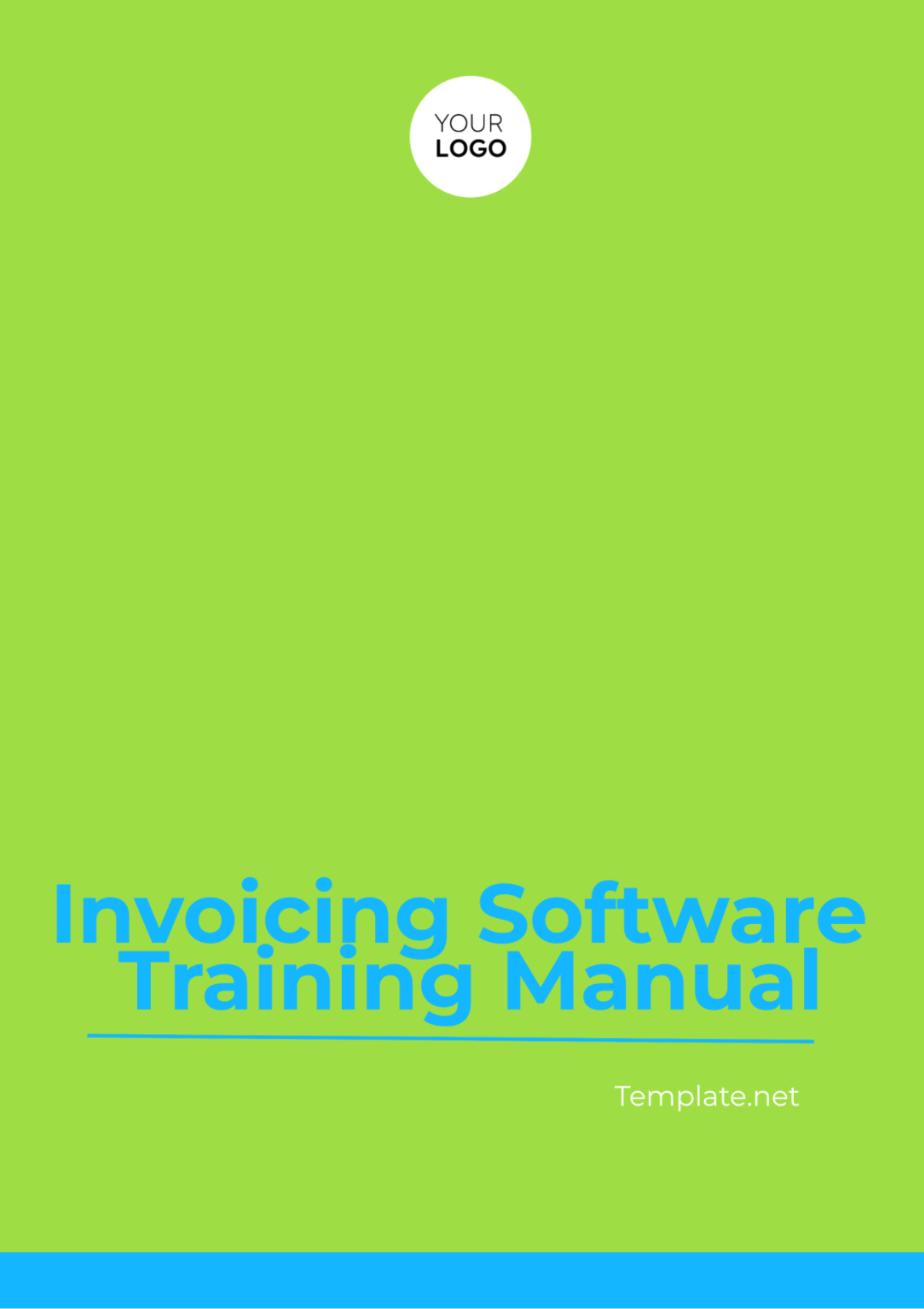Invoicing Software Training Manual
Name: | Company: | Department: | Date: |
|---|
[Your Name] | [Your Company Name] | [Your Department] | [Date] |
I. Introduction
In this Invoicing Software Training Manual Template, you will find comprehensive guidance on how to effectively utilize invoicing software to streamline your billing processes and manage your finances with ease. Whether you're a small business owner, freelancer, or accounting professional, this manual will provide you with the necessary knowledge and skills to maximize the benefits of your invoicing software.
A. Purpose
The purpose of this manual is to equip users with the knowledge and proficiency to navigate and utilize [Invoicing Software] efficiently. From creating invoices to managing clients and tracking payments, this manual covers a wide range of topics essential for mastering invoicing software.
B. Audience
This manual is intended for [Small Business Owners], [Freelancers], [Accounting Professionals], and anyone else involved in the invoicing and billing process. Whether you're new to invoicing software or looking to enhance your skills, this manual will serve as a valuable resource to optimize your invoicing workflows.
II. Getting Started with Invoicing Software
A. Software Overview
User Interface: Familiarize yourself with the layout and navigation of the software interface, including menu options, toolbars, and shortcuts.
Key Features: Explore the core features of the software, such as creating invoices, managing clients, tracking payments, and generating reports.
Customization: Learn how to customize settings and preferences according to your business needs, including invoice templates, tax settings, and payment terms.
B. Account Setup
Registration: Sign up for an account with the software provider and complete the registration process.
Account Settings: Configure your account settings, including company information, user permissions, and integration with other software tools.
Data Import: Import existing client data, product/service information, and invoice templates into the software to streamline setup.
III. Creating and Managing Invoices
A. Creating Invoices
Invoice Creation: Learn how to generate invoices using the software, including adding line items, applying taxes, and setting payment terms.
Invoice Customization: Customize invoices with your company logo, branding colors, and personalized messages to enhance professionalism and brand identity.
Invoice Templates: Explore different invoice templates available in the software and choose the one that best suits your business needs.
B. Managing Invoices
Invoice Tracking: Track the status of invoices, including pending, paid, and overdue invoices, to stay on top of your billing cycle.
Invoice Reminders: Set up automatic reminders for overdue invoices to encourage prompt payment and minimize payment delays.
Invoice History: Access a comprehensive history of all invoices generated through the software for easy reference and record-keeping.
IV. Client and Product Management
A. Client Management
Client Database: Create and maintain a database of clients and customers, including contact information, billing addresses, and payment preferences.
Client Communication: Use the software to communicate with clients via email or messaging features to send invoices, payment reminders, and updates.
Client Reporting: Generate client reports to analyze billing trends, track client payments, and identify opportunities for improving client relationships.
B. Product/Service Management
Product Catalog: Create and manage a catalog of products or services offered by your business, including descriptions, pricing, and inventory levels.
Product/Service Invoicing: Easily add products or services to invoices from the catalog, ensuring accurate and consistent billing for your offerings.
Product/Service Reporting: Generate reports to analyze sales performance, monitor inventory levels, and identify popular products/services.
V. Advanced Features and Integration
A. Advanced Invoicing Features
Recurring Invoices: Set up recurring invoices for subscription-based services or regular billing cycles to automate invoicing tasks.
Expense Tracking: Use the software to track business expenses, including receipts, bills, and vendor payments, for comprehensive financial management.
Time Tracking: Utilize time tracking features to record billable hours for client projects and easily convert them into invoices.
B. Integration with Other Tools
Payment Gateways: Integrate with popular payment gateways to offer multiple payment options to clients and streamline the payment collection process.
Accounting Software: Seamlessly integrate with accounting software platforms to synchronize financial data, including invoices, expenses, and payments, for accurate bookkeeping and reporting.
CRM Systems: Connect with customer relationship management (CRM) systems to synchronize client data and streamline client communication and relationship management.
VI. Conclusion
By following the guidelines and procedures outlined in this manual, you are well-equipped to harness the full potential of your invoicing software and optimize your billing processes for greater efficiency and effectiveness.
As you continue to use the software, remember to explore advanced features, stay updated on software updates and enhancements, and leverage integration capabilities to further enhance your invoicing workflows.
Here's to your success in managing your finances with ease and professionalism!
Manual Templates @ Template.net






























